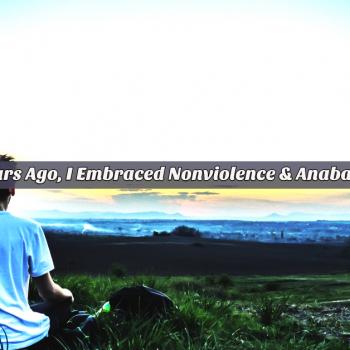UPDATE: I ACCIDENTALLY POSTED PART 5 FIRST AND PART 4 SECOND. HOPEFULLY YOU READ THIS POST FIRST AND THEN MOVE ON TO PART 5. BLESSINGS!
This is a series about women in ministry. I have found that in most evangelical circles, women who are in ministry do not have the same opportunities as men. Why is this? It comes from a deep seeded belief that core leadership of a biblical church is found in men alone. Women are equal in worth to God, but are limited in their function within the body of Christ. Here is the kicker, I think that Scripture might tell a different story. This series will be and exploration on this important topic. Here is part one two & three.
Central Question: Can women serve in any role within the church? If so, how does this compare to most modern evangelical churches? If not, what are the boundaries for women in ministry? How does the New Testament serve as a guide on this issue?
———————————————————————————————–
How are we to receive and respond to this New Testament witness in an age where egalitarianism is becoming the dominant mode of Western culture and where the church has a reputation for being oppressive towards women?
A. THE MODE OF HERMENEUTICAL APPROPRIATION
None of our main texts present a RULE although more often then not, both the 1 Timothy and 1 Corinthians texts have been read as such. In 1 Cor. 14 we find a PRINCIPLE that worship ought to be performed in the community in an orderly fashion. In 1 Timothy 2, the principle is that everyone has the right to learn and such is a prerequisite to speaking up and teaching. No one ought to assume such a role based on one’s gender status, for in Jesus the principle of equality abolishes any assumed entitlement. A PARADIGM that is evident is Paul’s example of Eve being deceived first to demonstrate that women are susceptible to failure and are therefore summoned to not allow their arrogance toward men in the church to lead them into Eve-like scenarios. Paul reminds them of the “fall” in order to bring balance back into the gender-role conversation. The SYMBOLIC WORLD is evident in Gal. 3.28 in which Paul paints a picture of God’s new creation people that are separated by nothing. This is a new humanity that although it is multi-faceted (made up of different ethic, social, tradition, and gender classifications), it remains untied in Christ as one common family; Abraham’s family.
B. OTHER AUTHORITIES
TRADITION – The earliest tradition, the witness of the New Testament makes clear that women were fully functional leaders within the churches. However, throughout most of church history the first two of our three main passages have been read to restrict women from being in leadership. From the church fathers and on, women have been in the margins of the church (with some exciting exceptions along the way).[1] This is evident in the Roman tradition that to this day does not ordain women for the priesthood and in most evangelical churches that carried that view forward. Early fundamentalism is an example of a strict boundary between the roles in ministry for women and men, which is still prevalent most evangelical traditions.
REASON – It is sound to suggest that beyond reasoning with the Scriptural witness, which clearly refutes the dominant tradition, we can ask a very simple question: Are women mentally inferior to men? I am guessing that no credible person would argue that men have superior intelligence or even superior spirituality. If this is the case, reason tells us that women are perfectly capable and have the potential to have the gifts of leadership, study, and teaching.
EXPERIENCE tells us that there are women in our midst that are both called to vocational ministry and have the same gifts that male ministers do. Yet, too often the assumption is present that they can only use their gifts in certain capacities, and thus they often are unable to express their full God given abilities. At the same time we also must acknowledge that for some who have been influenced by either tradition or fundamentalist readings of Scripture, to admit such threatens the very credibility of their faith.
C. CONCLUSIONS
1. We must recover a fully comprehensive approach from Scripture for addressing issues of gender-roles in the church rather than proof-texting with no regard for historical context and textual criticism.
2. We must choose to subvert the church’s assumption that women cannot be leaders/pastors/teachers through educating members on how to faithfully read these texts beyond the “surface level.”
3. The church has the opportunity to live as an egalitarian community that reflects God’s original intent for his image-bearers, and in doing so, to demonstrate to the outside culture how to live together as authentic and fully human beings.
4. Church communities in their local expressions have the opportunity to discern ways to mentor young women (the way in which young men are often mentored) toward discovering their unique gifts and callings, including those of leadership and teaching, so that the Holy Spirit is free to empower God’s church for her mission rather than being held back from her full potential impact.
5. Due to the dominant perspective on women in ministry within the evangelical church, we must enter into intelligent and compassionate dialogue with those in leadership who hold to such a view in order to enable them to return to the New Testament teaching on this issue.
6. We have the opportunity within the church to reevaluate all levels of female involvement, and to begin acting intentional about moving toward visible egalitarianism rather than simply holding to an egalitarian conceptual theology that is not fully actualized in our praxis.
A FINAL POST IS YET TO COME…
[1] On this subject, see: Ruth A. Tucker and Walter Liefeld’s, Daughters of the Church: Women and Ministry from the New Testament Times to the Present (Grand Rapids: Zondervan Academic, 1987).













